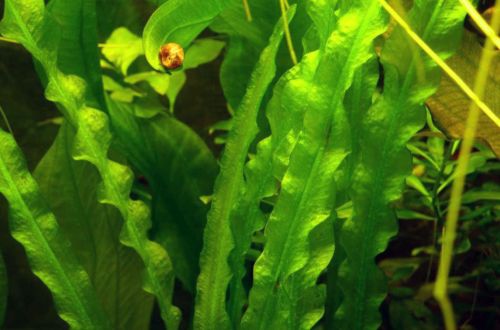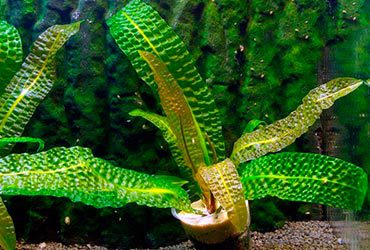
Water lily fluffy
Fluffy water lily, scientific name Nymphaea pubescens. The plant is native to tropical Asia. The natural habitat extends from Pakistan, India and South China to Indonesia, the Philippines, Papua New Guinea and Australia. It occurs in shallow water in small reservoirs (lakes, swamps) with silty substrates in places well lit by the sun.
Under favorable conditions, the plant forms large (more than 15 cm in diameter) reddish underwater leaves on long petioles. In low aquariums and long daylight hours (more than 8–9 hours), floating heart-shaped green leaves 15–20 cm in size appear. The edges are uneven, serrated. In these conditions it can bloom white flowers.
The flower is formed on a long stem, or is located directly on the surface of the water. The lower surface of the floating leaves and the stalk-stalk of the flower have a lot of villi because of which the plant got its name – Fluffy water lily.
There are several closely related species. For example, Nymphea Red and Nymphea rubra, which have a similar shape and leaf color with slight visible differences. Due to the external similarity and similar conditions of detention, these plants are often confused, supplying different species under the same name. In addition, in a number of sources the names are used as synonyms.
Keeping in an aquarium requires attention. For normal growth, a large pivot space is required. Submerged leaves can obscure smaller plants that are close by, and if floating leaves appear, the amount of light falling into the depths will be significantly reduced.
It is necessary to provide an intensive level of lighting and soft nutrient soil. Light affects the color of the leaves, if it is not enough, they begin to lose their reddish tint. It is recommended to purchase a special aquarium soil containing the necessary trace elements. It is desirable to maintain the hydrochemical composition of water near neutral pH values and low total hardness.





